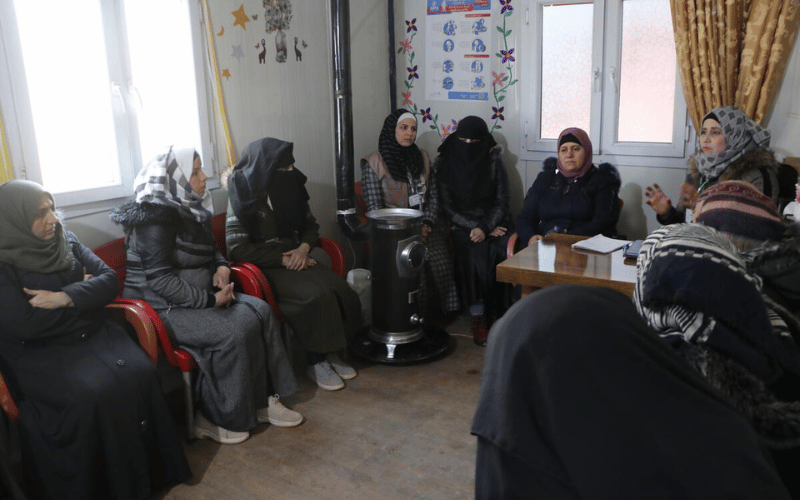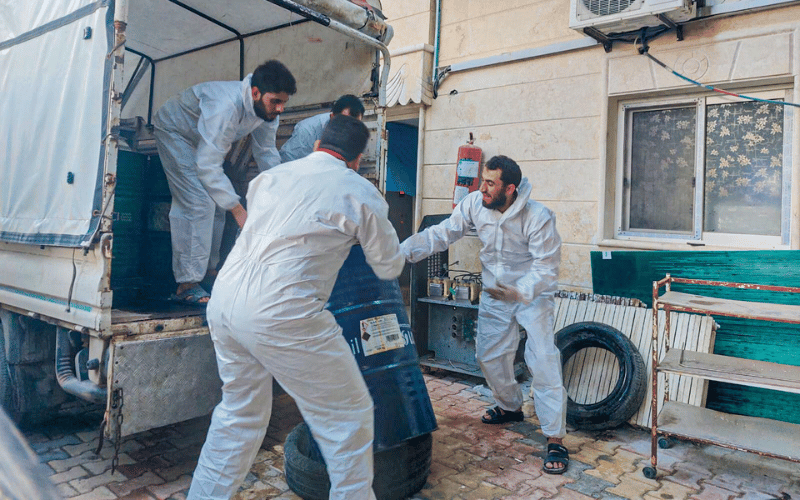By Helen Barclay-Hollands, Fragile and Humanitarian Programs Manager
Between November 2015 and February 2016,
over 26,100 Syrian refugees were welcomed into Canada—an unprecedented refugee resettlement effort by Canada.
When conflict broke out in Syria and the news was flooded with videos and photos of the violence, the world stepped up to support the thousands of families forced to escape.
And now, 13 years later, Syria is thrust into the media spotlight again, in even more need of humanitarian aid alongside Türkiye, with two earthquakes compounding what was an
already-fragile situation.
The Syria refugee crisis is already recognized as the largest refugee crisis of our time—the impact of the Türkiye-Syria earthquakes has made it worse.
The earthquakes’ impact on child safety
Türkiye is home to the largest number of refugees in the world—
four million refugees, the majority of who came from Syria. The earthquakes have severely impaired the country’s ability to support these refugees.
Families who couldn’t leave their homes in northern Syria—or who settled in southern Türkiye—now have no homes, with many buildings reduced to nothing more than rubble. The UNHCR estimates as many as
5.3 million people in Syria may have been left homeless due to this earthquake.
 Children in Syria already faced challenging living conditions before the earthquakes hit, such as being forced into child marriage and child labour.
Children in Syria already faced challenging living conditions before the earthquakes hit, such as being forced into child marriage and child labour.
Since 2011, World Vision has supported over 7.5 million children affected by the ongoing conflict in the region, a conflict that has
stolen a whole generation of childhoods. Over a decade of conflict created massive ongoing needs in Syria—humanitarian need that has grown exponentially for 1.8 million children in northwest Syria due to the earthquakes.
According to UNICEF, around 80 per cent of people in Syria live below the poverty line, and more than 90 per cent of Syrian refuges in host communities like Türkiye face challenging conditions.
Instead of learning in school and playing in safe places, Syrian children are forced out of school to support their families. Girls are at a higher risk of being exploited through child marriage, which was already a significant issue.
Children in Syria need as much psychosocial support as ever before, as soon as possible. Research from the World Health Organization shows that
one in five people who have experienced violent conflict will develop depression, anxiety, post-traumatic stress disorder, bipolar disorder or schizophrenia. Our local sources report that many civilians are
suffering from nervous breakdowns already after losing loved ones from the earthquake.
 As survivors of the earthquakes, these women have gathered to receive initial psychological support from World Vision to help process the trauma they have witnessed.
As survivors of the earthquakes, these women have gathered to receive initial psychological support from World Vision to help process the trauma they have witnessed.
The
earthquake’s impact on children is particularly significant as caregivers have been killed, injured and traumatized, schools and houses destroyed, schooling materials lost, families lost their incomes. The levels of traumatic stress among girls and boys remain high. Children have become more vulnerable and at greater risk of exploitation and abuse.
The earthquakes’ impact on health
After the earthquakes, hundreds of thousands of women, men and children are displaced yet again, stranded outside in freezing temperatures—huddling in shopping malls, stadiums, mosques and community centres.
With sub zero temperatures, families are freezing in the cold and have little access to healthcare facilities, increasing the risk of hypothermia. Families also face a high risk of waterborne disease, amid an ongoing cholera outbreak in the region.
Alongside fellow members of
the Humanitarian Coalition, our staff members in the World Vision Syrian Response are on site in Türkiye and Syria, setting up temporary shelters and distributing food and supplies for warmth—but the needs are rising and they need the support of the global community.
 As of February 14, 2023, over 9,600 people are being housed in emergency shelters in Syria that are supplied with heaters and fuel.
As of February 14, 2023, over 9,600 people are being housed in emergency shelters in Syria that are supplied with heaters and fuel.
Humanitarian teams on the ground face extra challenges to accessing northwestern Syria, due to earthquake damage blocking two main access roads. They need all the support they can get.
Canadians can keep supporting Syrian children
Back in 2015, Canada stepped up in the global effort to provide safety and care to refugees fleeing the violence in Syria. Today, the survivors of the Türkiye-Syria earthquakes need that same passion and care—especially children, who are the most susceptible to the physical and mental impacts of this crisis.
While Canada has already provided aid for earthquake survivors, children’s needs are rapidly increasing as we continue to assess the damage.
Children cannot live, learn and play safely if they are forced out of their homes; if they are at severe risk of exploitation and illness; and, most of all, if they have no access to basic needs like food and water.
There is no time to waste.
The international community keep stepping up to help survivors before we lose even more lives.
Here are ways you can help: